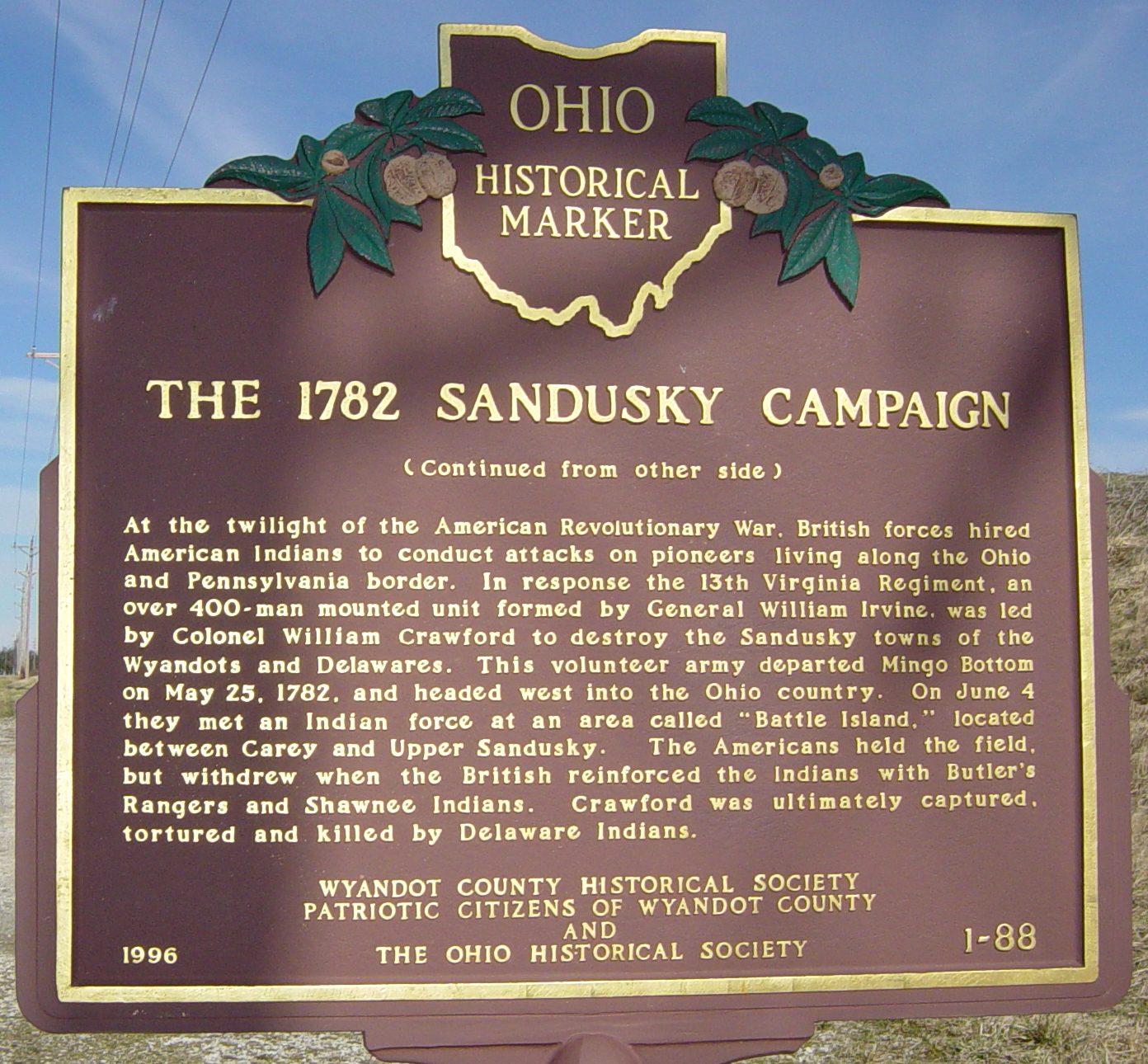During the American Revolution, Private Charles Hickman lived in Westmorland and Washington Counties, which were formed from Fayette County in Pennsylvania.
He received deprecation pay for services up to January 1, 1781. Deprecation pay was paid to Pennsylvania soldiers to make up the difference between the continental money and the specie. He also participated in the Sandusky expedition under Col. William Crawford.
The ill-fated Sandusky expedition was a campaign on the western front of the American Revolution in 1781. Led by Col. William Crawford, the campaign’s goal was to destroy enemy Native American towns along the Sandusky River in the Ohio Country, in an effort to end American Indian attacks on American settlers.
On May 25, 1782, Col. Crawford led about 500 volunteer militiamen, mostly from Pennsylvania, in a surprise attack on the Sandusky towns. The American Indians, however, and their British allies from Detroit, learned of the expedition in advance of the attack. After a day of indecisive fighting, the Americans found themselves surrounded and attempted to retreat, which turned into a rout. Most of the Americans returned to Pennsylvania, with about 70 Americans killed.
During the retreat, Crawford and several of his men were captured when they returned to the site to find some of Crawford’s relatives who had been on the expedition. The American Indians executed many of these captives in retaliation for the Gnadenhutten massacre, which occurred earlier that year, and in which about 100 peaceful American Indians were murdered by Pennsylvanian militiamen. Crawford’s execution was particularly brutal: he was tortured for at least two hours before being burned at the stake. His execution was widely publicized in the United States, worsening the already-strained relationship between American Indians and European Americans.
Charles Hickman died in Washington County, Pennsylvania, in June 1790.


